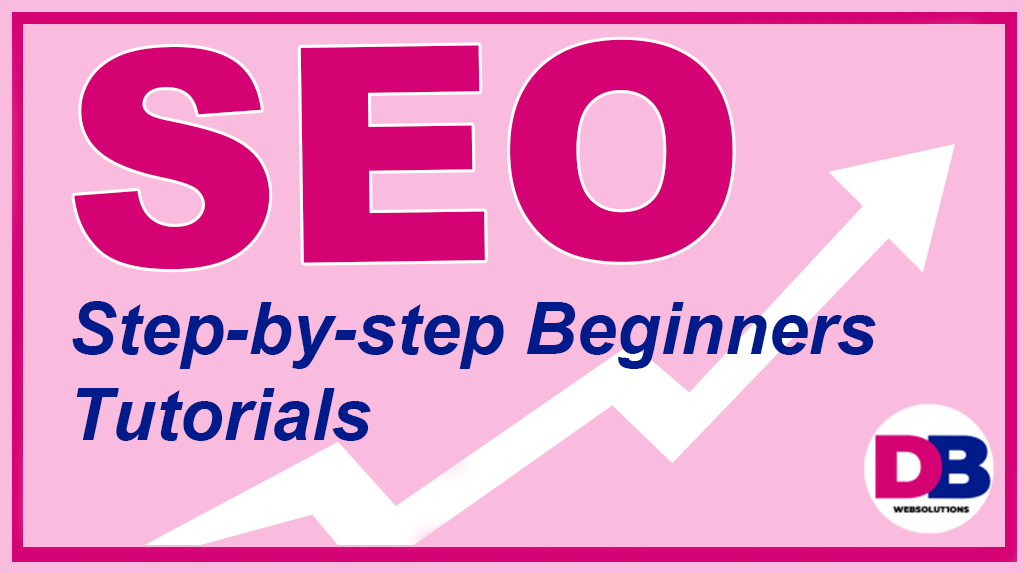SEO tips for beginners include targeting relevant primary and secondary keywords, writing quality original content, assessing competitors, doing keyword research, finding SEO tools that work for you, understanding user intent, targeting short-tail and long-tail keywords, writing longer posts, producing fresh content, optimizing titles, meta descriptions and headings, optimizing URLs, hunting for backlinks, linking to other websites and understanding the three different search intents
DBWebSolut1ons.com provides a comprehensive SEO tutorial for beginners in five steps. This tutorial covers the basics of SEO, such as keyword research, on-page and off-page optimization, and SEO tools. It also explains how to create an effective SEO strategy and provides actionable steps to get started.
The tutorial is suitable for intermediate-level aspirants who wish to learn more about SEO tools and stay abreast with the latest Google updates and algorithm change. It covers topics such as keyword research, content optimization, link building, technical SEO, and more.
Finally, the tutorial provides five essential steps to help beginners increase organic traffic and master SEO once and for all. These steps include understanding search engine algorithms, optimizing content for keywords, creating backlinks, tracking progress with analytics tools, and more…

SEO tutorial for beginners in five steps
Search Engine Optimization (SEO) is an essential aspect of digital marketing that helps your website rank higher in search engine results pages (SERPs). With the right SEO techniques, you can increase your website’s visibility, drive more traffic, and ultimately, boost your revenue.
If you’re new to SEO and don’t know where to start, this step-by-step beginners tutorial will guide you through the process of optimizing your website for search engines.
Step 1: Research Keywords
The first step in SEO is to research keywords that are relevant to your business or industry. These keywords are the phrases that people use when searching for products or services like yours.
To find the best keywords, you can use a keyword research tool like Google Keyword Planner. Simply enter a few relevant phrases and the tool will show you the search volume, competition, and suggested keywords.
Step 2: Optimize Your Website
Once you’ve found the best keywords, it’s time to optimize your website. This includes making sure your website is mobile-friendly, has a clear navigation structure, and is easy to read.
You should also include your keywords in the following areas of your website:
Title tags: These are the text that appear in the browser tab and are used by search engines to understand what your website is about.
Meta descriptions: These are the short summaries that appear under the title tag in search engine results pages.
Headings: Use your keywords in H1, H2, and H3 tags to emphasize the main topics of your website.
Step 3: Create Quality Content
Search engines love fresh, high-quality content. To improve your website’s SEO, you should create engaging blog posts, infographics, videos, and other types of content that are relevant to your target audience.
Make sure to include your keywords in your content, but don’t overdo it. Search engines can penalize you for keyword stuffing, which is when you use the same keyword too many times in your content.
Step 4: Build Backlinks
Backlinks are links from other websites that point to your website. The more backlinks you have, the more authoritative your website will appear to search engines.
To build backlinks, you can reach out to other websites in your industry and ask them to link to your website. You can also create quality content that other websites will want to link to.
Step 5: Monitor Your Results
SEO is an ongoing process, and it’s important to monitor your results to see what’s working and what’s not.
You can use tools like Google Analytics to track your website’s traffic, bounce rate, and other important metrics. You can also use a tool like Ahrefs to track your backlinks and see which websites are linking to your website.
By following these simple steps, you can improve your website’s SEO and increase your visibility in search engine results pages. Remember, SEO takes time and effort, but with patience and persistence, you can achieve great results.
SEO Best Practice
SEO best practices involve aligning content with search intent, writing compelling titles and meta descriptions, optimizing images and site structure, developing content based on target keyword research, using effective titles and headings, writing strong meta descriptions, optimizing all pages for SEO, using HTTPS, making sure pages load fast, targeting topics with search traffic potential, matching search intent, and targeting topics in depth. Google’s SEO Starter Guide provides an overview of the basics of SEO according to best practices.
SEO Optimization
Search engine optimization (SEO) is the process of improving the quality and quantity of website traffic to a website or a web page from search engines. It involves technical and content practices aimed at aligning a website page with a search engine’s ranking algorithm so it can be found more easily by users. SEO can involve keyword research, link building, site audits, page optimization, rank tracking, reporting, and more. Google provides an SEO starter guide for an overview of search engine optimization essentials, while Moz offers a beginner’s guide to SEO with a free quick start checklist.
